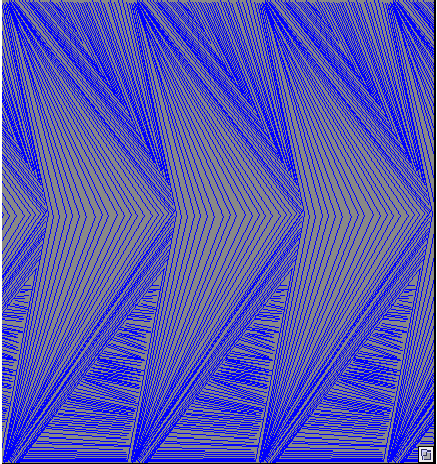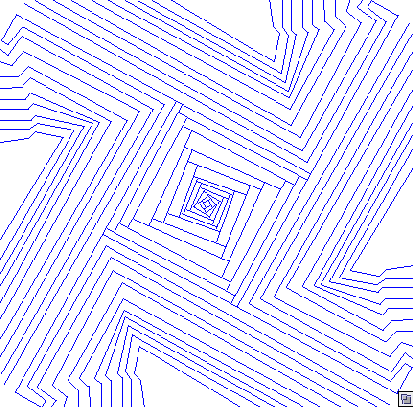-
Up: Home Page
Optical Art Designs
Background Information
- Optical art evolved in the twentith century when such artists as Victor Vasarely, Bridget Riley, and Rene Parola took its concepts to new heights. Optical art involves the study of perception. Op artists use geometric shapes as a theme in their works. Included are symmetrical, illusionary, and optical discrepancy compositions.
The following information can serve as an investigation of various symmetrical art forms and geometry.
Assumptions and Definitions
- The author makes the following assumptions:
-
Access to a computer which is connected to the www through a browser such as Netscape.
- The program: Kali is installed onto the user's computer.
- Netscape is configured to load Kali as a helper application.
The author contributes the following definitions as a view into the wonderful world of op art...as it relates to geometry:
- PERSPECTIVE:
- SYMMETRY: where a center represents a focus point.
- ILLUSION: a form of perspective that creates a feeling of movement. EX: lines seem to bend when diagonals are used to create an illusion of space.
- POSITIVE SPACE: the subject matter; the focus point(s) is dominant in an image.
- NEGATIVE SPACE: the space that surrounds the subject matter; it is usually larger than the subject matter.
- REVERSALS: when a starting point of a figure becomes an illusion; usually the negative and positive space has equal contrasts but provides no clues as to which is the subject or the ground (like wallpaper designs).....(link blue yellow)
- PROXIMITY: when the subject matter appears to form a group.
- SIMILARITY: when the subject matter relates in either size, color, value, or texture.
- MOIRE: a pattern that includes intersecting angles (usually less than 30 degree angles) that are magnified and appear to fill space. EX: picket fences, sheer nylon curtains.
- PROGRESSION: the subject matter increases in stages; includes both horizontal and vertical vanishing points. Click here for an example
Examples
Here are some examples of optical art.
 Blue skies or seas?
Blue skies or seas?
 Tunneled
Tunneled
Optical Art Lessons
Lesson 1
Lesson 2
Lesson 3
Lesson 4
Lesson 5
Student Activities
Student Lesson 1
Student Lesson 2
Student Lesson 3
Student Lesson 4
Student Lesson 5
Other Sources
Bibliography
Send comments to: LaToniya Jones- McKinnon
Created July 1996 Updated: 24 July 1996 A.D.Copyright © 1996 by LaToniya Jones-McKinnon. All Rights Reserved
- The author makes the following assumptions: